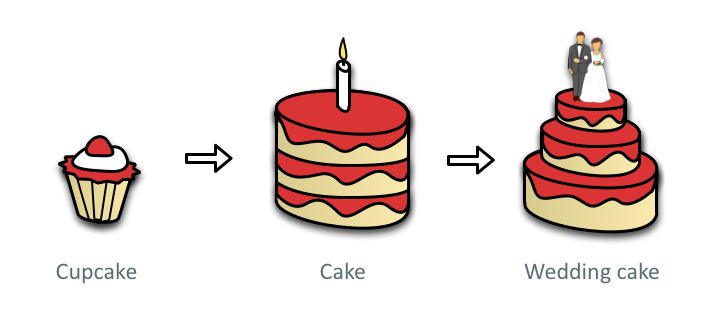If you ever had the fortune (or misfortune, depending on your circumstances) to get involved with an early stage technology company, you would have heard no ending of the abbreviation MVP. For the unfamiliar, MVP stands for Minimum Viable Product. While we use the term liberally, do we really understand what it means? More importantly, has your early stage product reached the status of MVP?
I would like to argue that MVP is not a single state of a product. In fact, it revolves around three stages, depending on your vision and strategy.
The Minimum Usable Product
Many startups fall into the trap of building a product with many features before inviting external users. The product can be deemed useful when it delivers a single benefit, irrespective of how small the benefit might be, to an outsider. In most cases, the development team may not consider it as sufficiently of benefit to a user, at this stage. So they continue to add further functionality until such time, the team decides that the product has sufficient functionality to achieve stickiness.
By doing so, you loose the opportunity to test functionality in detail one at a time and gather early user feedback. Whilst some teams love early user engagement, others hate having to answer questions as they are fully aware of the missing functionality without users having to remind them. I’ve personally experienced both.
- Whilst edocr.com wasn’t build with lean startup principles, we nevertheless launch a product, which can only be deemed as an Alpha product. With hindsight, it had too many functions, but worst of all, was full of bugs.
- We have not yet launched Livestax V2. Yet, a version of it was released to support a sport charitable event, Strive Challenge. A similar version could be released today for all, yet, its considered as of not sufficient functionality.
- Contrast to both edocr and Livestax, Buffer in early days followed the lean startup methodology to the letter. Joel built and launch Buffer in 7 weeks (read the story here).
Its important to truly understand the goals and objectives of the first usable product. Is this to gain users, who might eventually become customers? Are you using early users to validate the product and vision? Is this to iron out bugs and improve the usability of the product? Or could this be for a combination of above?
The Minimum Saleable Product
The Minimum Saleable Product on the other hand is quite different. This is the very first version of the product that a customer is willing to pay for.
Clarification: Customers pay to use the product. Users use the product without paying.
Drawing from experiences:
- Whilst Livestax V2 (history: V1 was launched inside the parent company in Jan 2014) can be released as a minimum useable product, functionality necessary for charging customers is yet to be built.
- Buffer (history: I’ve known Joel for a long time and thought his idea for Buffer was silly) gained the first customer in seven weeks from starting before even the functionality was there.
- edocr.com started as a free service and remained the same for many years before pricing was introduced. edocr now operates a freemium pricing strategy, similar to Buffer and other services.
The Minimum Viable/Scalable/Sustaining Product
Whether your product is offered free or generate revenues through subscriptions isn’t the real test. The real test is on the scalability of the solution in terms of sustaining and growing its user base and/or revenues. If its sustainable, the additional functionality can be built and the product can be further refined, in addition to hiring more people and building a business around the product.
You should not confuse yourself thinking above state is same as achieving product/market fit. Your product require significant traction before reaching product/market fit state.
Summary
The Minimum Useable Product provides a small benefit to your users whilst validating the product idea. The Minimum Saleable Product confirms that customers are willing to pay for the minimum product you built. The Minimum Viable Product signals you to continue to build the product with early market re-assurance that people are happy to use and pay for your product. At this point, one can conclude that your product has achieved the minimum viable state, where a business can be built around the product.
 If we compare the three products mentioned against the graph from Rand Fishkin, co-founder of Moz, then:
If we compare the three products mentioned against the graph from Rand Fishkin, co-founder of Moz, then:
- It is possible when Livestax is eventually launched to outsiders, it might reach Exceptional Viable Product stage, by passing typical MVP state.
- Whilst this is my personal opinion, Buffer fitted into a state between Zero and Quite Small on the x-axis, when it was first launch.
- Whilst edocr was buggy at Alpha launch (we actually called it edocr Alpha), it fitted into Quite Small state, even though, no lean startup methodology was followed. Whilst bugginess should have reflected in Pathetic on Y-Axis, we actually gained decent publicity and sign up rate in the first 3 months after launching.
Enjoy the story of how Joel built Buffer in 7 weeks
I would love to hear your experiences of launching a Minimum Viable Product.
Image credits: Martin Christensen and Rand Fishkin (Moz)
